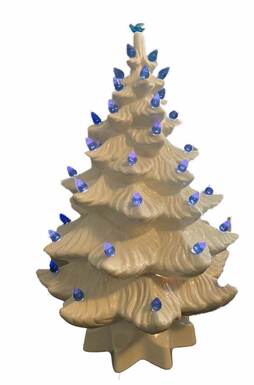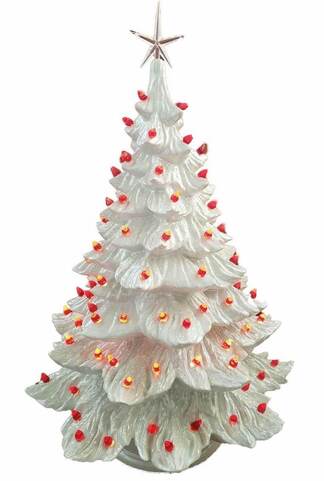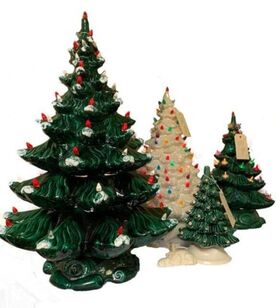These trees come in many styles and colors making them a joy to collect and fun to display. But why are they so special to so many people? And how do you identify an original? To understand that, you need to know a little bit of the history.
These mass-produced objects were flooding homes, so the desire to have something a little more unique and different arose. This is where paint-your-own and DIY gifts became popular. Probably one of the most popular paint-your-own projects was the ceramic Christmas tree.
Companies of note are; Dogwood Ceramic Supply, Arnel’s and Holland Mold. If you find a tree marked with any of these names, you know you got an original. If a tree is stamped with a date, it’s not necessarily from that time. Many of the mold companies today are using the molds from the 60s and 70s, so it pays to research the mold company before relying on the date.

To get one of these trees in the 60s and 70s, you would have to take a one day class at a ceramic studio, where you would paint, then glaze and fire the tree in a kiln. That also changed with advancements in materials.
In the 1980s, versions came out that you would make at home with acrylic paint. In the 1990s the popularity of mold painting dropped and many ceramic studios and mold companies closed. Japan and China started to mass produce readymade, no painting needed, trees that could be bought at a store.
You can find these today on Amazon or at Target, but they aren’t nearly as special as the handmade ones. With a resurgence of nostalgia for these trees and the paint your own classes, you might be able to find a class or a boxed set where you can make your own ceramic Christmas tree!

